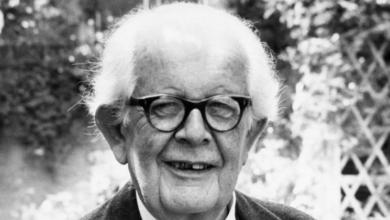- Kohlberg extended Jean Piaget’s theory by proposing six stages of moral development, grouped into preconventional, conventional, and postconventional levels.
- Kohlberg used moral dilemmas, like "Heinz Steals the Drug," to study how people reason about right and wrong at different stages.
- This initial level focuses on obedience to authority and personal benefits, with morality driven by rewards and punishments.
- In early adolescence, individuals accept societal norms and rules, aiming to maintain order and gain approval from others.
- At the highest level, individuals base decisions on universal principles of justice, fairness, and individual rights, beyond societal norms.
Lawrence Kohlberg was a key figure in the study of how our sense of right and wrong develops over time. He expanded on Jean Piaget’s work, which looked at how children think, by focusing specifically on moral development. Kohlberg believed that as people grow, their moral reasoning becomes more complex. He proposed that we go through six stages of moral development, grouped into three levels: preconventional, conventional, and postconventional. Kohlberg argued that our moral reasoning changes from thinking about our own needs to considering society’s rules and, finally, to thinking about universal principles.
The Kohlberg Moral Dilemma Method
Kohlberg used stories, or moral dilemmas, to understand how people think about right and wrong. He would present these scenarios to people and ask them to explain their decisions. One famous example is the “Heinz Steals the Drug” dilemma, where a man named Heinz must decide whether to steal a drug he cannot afford in order to save his dying wife.
Kohlberg’s initial study involved 72 boys from different backgrounds in Chicago, ages 10, 13, and 16. He later included younger children, delinquents, and boys and girls from various places. By listening to how they reasoned through these dilemmas, Kohlberg could identify which stage of moral development they were in.
Stages of Moral Development
Kohlberg’s theory has three levels, each with two stages, showing how our thinking about morality evolves.
Preconventional Level
This is the first level, usually up to age 8. Here, children see morality as something imposed by others, focusing on rewards and punishments.
Stage 1: Obedience and Punishment Orientation
Children believe they must follow strict rules set by authorities to avoid punishment. For instance, in the Heinz dilemma, a child might say Heinz should not steal because stealing is bad and he will get punished.
Stage 2: Individualism and Exchange
Children start to realize that different people have different views. They make decisions based on what benefits them. In the Heinz dilemma, a child might say Heinz should steal the drug if it helps him, but not if it means he will go to jail and suffer more.
Conventional Level
This level usually starts in early adolescence. Here, people accept societal rules and norms about right and wrong.
Stage 3: Good Interpersonal Relationships
People want to be seen as good by others. They believe in living up to expectations to maintain relationships. In the Heinz dilemma, they might say Heinz should steal the drug because he loves his wife and wants to save her.
Stage 4: Law and Order Morality
At this stage, people believe in obeying laws and respecting authority to maintain social order. They might say Heinz should not steal the drug because laws are important to prevent chaos, even if his intentions were good.
Postconventional Level
This is the highest level, where people think about moral principles and values beyond societal rules.
Stage 5: Social Contract and Individual Rights
People consider what makes a good society and think about rights and values. They might say Heinz should steal the drug because life is more important than property, and laws should be flexible to serve justice.
Stage 6: Universal Principles
At this stage, people follow self-chosen ethical principles. They make decisions based on justice, fairness, and respect for all. Kohlberg eventually stopped scoring for this stage because it was rare and hard to distinguish from Stage 5.
Critiques of Kohlberg’s Moral Development Theory
Kohlberg’s theory, while groundbreaking, faced several criticisms:
Artificiality of Dilemmas: Critics argue that Kohlberg’s moral dilemmas are too hypothetical and don’t reflect real-life decision-making.
Sample Bias and Gender Controversy: Initially, Kohlberg’s work suggested men reach higher stages of moral development. Carol Gilligan argued that women have a different, not inferior, way of reasoning about ethics.
Hypothetical Nature of Dilemmas: Theoretical reasoning may not always match real-life behavior.
Research Design Critiques: Kohlberg’s cross-sectional research has been criticized for not accurately showing how moral reasoning changes over time. Longitudinal studies are considered more reliable.
Despite these critiques, Kohlberg’s theory remains a significant tool in understanding moral development. It helps psychologists and educators see how reasoning about right and wrong evolves, emphasizing the importance of thinking in shaping ethical behavior.

